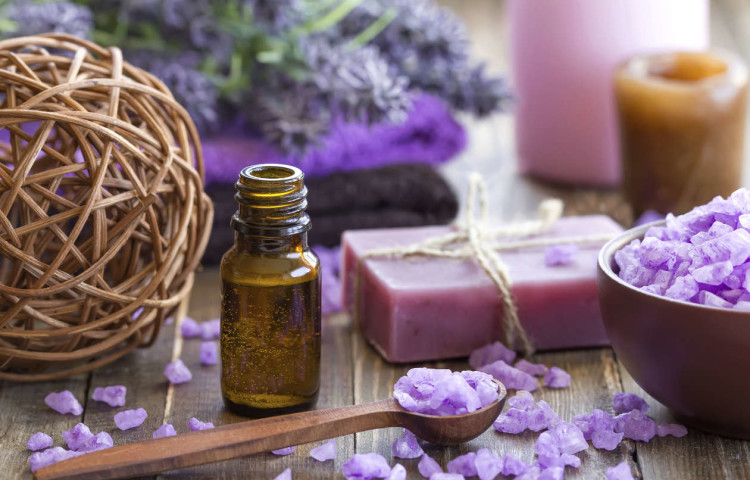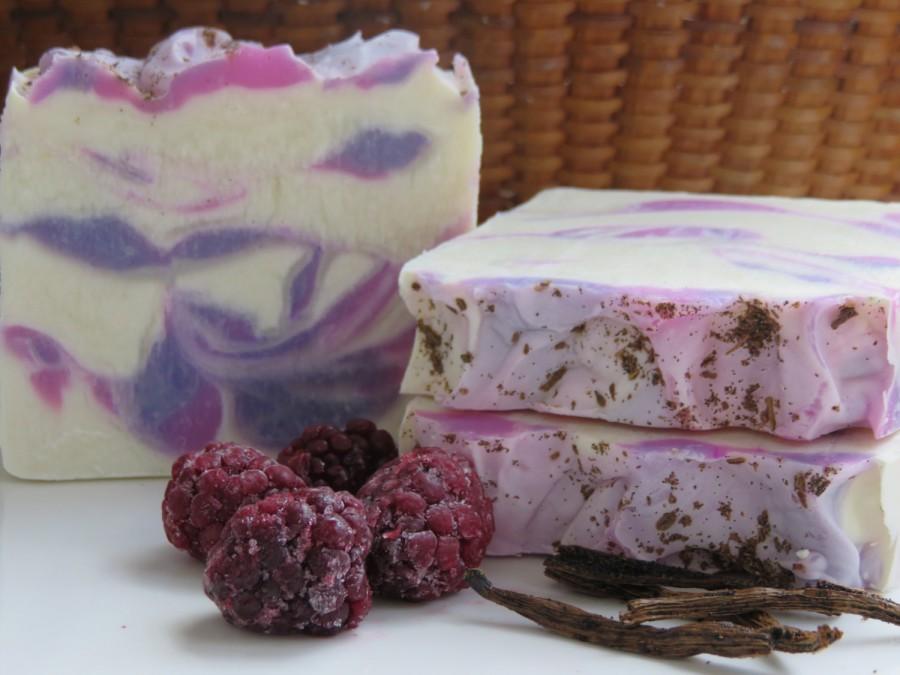Soap has existed for several thousand years and is still the most popular hygiene product. The process of creating this product from scratch is complex and requires great care due to the work with alkali. But making soap in this way has a number of important advantages: if the technology is followed, it takes care of the skin without drying it and does not cause allergic reactions. The composition of the soap created in this way includes only natural ingredients: various fatty oils, essential oils, herbal decoctions. But the process of its manufacture is quite long and laborious. Beginners in soap making rarely begin their work by making soap from scratch. For those who are just trying their hand, there is another, safer and easier way to create this product on their own. The composition of the soap in this case can be selected at your discretion.
Soap base - an assistant for beginners
Home soap making has become more accessible thanks to the appearance of soap base on the shelves of needlework stores. Soap from the base contains various chemical elements, but still it is more beneficial to the skin than purchased. Such a product foams better, cleanses well, has moisturizing properties and smells good. The shape, color, smell can be chosen independently.
Most beginner soap makers do not know what soap is made of, what is included in the base. The composition indicated on the package does not allow to reveal this secret, as it consists of incomprehensible phrases. The soap base consists of approximately 80% natural ingredients. But there are so-called organic bases. They contain much less chemical compounds.
Soap bases can be solid and creamy. Solid before use, cut into small cubes and melt in a water bath or in the microwave. It is important to ensure that the soap base does not boil - then it will lose many of its beneficial properties. Before you make soap at home, it is worth deciding on whether you want to get a transparent or opaque product. There are foundations for both. The difference is only in the content of titanium dioxide. The transparent base can be painted or made opaque by adding another substance to it.
What you need to make soap from the base
Before you make soap at home, you will have to buy at least a minimum set of ingredients and tools:
- soap base;
- several dyes;
- flavorings, fragrances or essential oils;
- base oil;
- mold for soap;
- pipettes
- containers.
Soap base can be purchased in specialized stores or in large departments where goods for needlework are sold. As an alternative to soap-makers, children's soap is very popular. There are several peculiarities in working with it: whetstones do not melt well, therefore they should be grated and finely mixed with water or milk before being placed over a water bath. Baby soap has its own specific smell, which is almost impossible to interrupt. Therefore, it is better to begin with the use of the foundation. By adding special colors and flavors, it can be given any shade and smell. It melts faster and easier, holds its shape well, does not crack and looks much more attractive than works made from children's soap.
Fragrances and dyes for soap
Fragrances can be bought synthetic - they are very diverse, there are even perfumes similar to perfumes. Bottles are very economical - a few drops will be enough to give a pleasant smell to a standard bar of soap. You can use essential oils if you can buy natural ones. It is important to consider that these essential oils are expensive, they can be purchased only in special online stores. Cheap counterparts sold in pharmacies are synthetics. Their use will not bring health benefits, and may even harm. Before making soap at home with the use of fragrances, do an allergy test.

You can stain a transparent base with herbal decoctions - you can’t achieve a bright shade, but the soap will be more beneficial for the skin. It is worth considering that such a hygiene product will have to be used very quickly, literally within a month. Food colors are also suitable, but they may not be distributed evenly and quickly lose color. In order to more conveniently measure the required number of dyes and flavors, it is worth purchasing special pipettes.
What are base oils
If you decide to make soap yourself, you should get acquainted with the properties of base oils - liquid oils that are added to the base. If you do not use this ingredient, the molten mass will not thicken for a long time, and the finished product will dry the skin. Most often, olive oil is used as a base - as the most affordable. But it is worth trying other options. When adding various base oils, the properties of the soap change. For example, grape seed oil not only has tonic properties and cares for the skin, but also makes the bar itself softer, more plastic and more pleasant to the touch. A mild and moisturizing soap can be obtained by adding a few drops of apricot oil.
How to choose containers and molds for soap
You can use any containers for soap making, but it should be borne in mind that fragrances and dyes are eaten into their surface and it will be almost impossible to get rid of them. Choose the forms to your taste - you can not even buy them, but use, for example, food containers or plastic bottles. To create soap, even children's sandbox kits are often used. But it’s best to get silicone molds. It is easier to remove the finished product from them without damaging its surface. Soap often sticks to plastic. It’s easier to get such a stuck block if you dip the bottom of the mold in hot water.
How to make soap
For beginners, the information below will come in handy. When everything you need is available, you can start soap making:
- Prepare the workplace. Protect surfaces and your hands from accidentally spilled colors and flavors.
- Conveniently place all the ingredients and tools.
- Cut the base into small cubes and melt it in a water bath or in the microwave.
- Pour the right amount of base into the container, add a few drops of base oil, dye, flavor, mix the mixture until smooth.
- Pour the base into the mold and let it cool completely.
This is the easiest way to make soap from the base. But, using this knowledge, you can create real masterpieces by combining shapes and colors, adding various fillers. Soap making is a real field for experimentation, so you should not limit yourself and your imagination,
How to cook liquid soap from solid
There is a method that allows you to make liquid soap at home from a baby. As in the case of hard bars, first you need to grate it and melt in two liters of water, and then mix the mass until smooth and let cool. After that, add flavoring, a tablespoon of glycerin, base oil and dye, mix again and pour into bottles. Another option, thanks to which you can make liquid soap at home, is more economical. It allows you to recycle the remnants accumulated in the house.
“Zero” handmade soap: master class
Soaping from scratch requires attention and caution. If you decide to make soap in this way, start by choosing a recipe and buying ingredients. The composition will contain various solid and liquid oils, water, alkali and flavorings. Experienced soap makers themselves determine the composition and create new recipes. How to make soap with your own hands from scratch? There are two ways: cold and hot.
The cold soap process consists of five stages:
- First of all, you need to melt the base oils.
- Water before use is frozen at 2/3, and then slowly mixed with alkali. The temperature of the resulting solution and melted oil should be about 5 degrees.
- The oil and solution are whipped with a blender, dye and flavor are added to the mass.
- Soapy mass is poured into molds.
- Forms are wrapped in cloth and placed in a warm place for 2-3 days.
You can use such soap no earlier than a month later.
How to make soap at home in a hot way? This option is more similar to soap making. First, you need to repeat all the steps until the third stage, inclusive, and then place the container with soapy mass in the oven preheated to 50 degrees for about 3 hours. The readiness of the soap can be checked with a strip that determines the level of Ph - it should be light green. Then added perezhir - oils that will not react with alkali, flavoring. Soap mass is decomposed into forms. After complete cooling, the finished soap is cut into pieces. You can use it after a week.
Soap making precautions from scratch
Carefully read the selected recipe to understand what soap is made of and what steps the work process consists of. Remember that it is important to observe precautions when working with alkali. When interacting with water, it releases corrosive fumes and can cause severe chemical burns if it comes into contact with skin and mucous membranes. To protect you will need special glasses, an apron and gloves. The room where the soapmaker works should be well ventilated to avoid poisoning. Work surfaces can also be damaged if alkali gets on them, so it is advisable to cover them with film or newspapers. Essential oils can be dangerous in high concentrations and cause allergic reactions. Do not allow them to come into contact with the skin; observe moderation when working with them. The recipe for making soap with certain properties usually contains a detailed description of the technology. Read all the instructions in advance and understand the steps to understand what follows and why. The wrong sequence of actions will lead to a deplorable result.

If you decide to make soap at home from scratch, first of all you need to prepare the necessary tools, lay out all the ingredients on the work surface in the desired sequence. Check expiration dates. When using expired products, it is difficult to obtain a satisfactory result. Weigh precisely the required amount of ingredients in advance, in the process of work it simply may not be enough time. Do not measure something “by eye”. In the process of soap making, accuracy and care are very important. Use containers and containers of sufficient size so that the soap mass does not splash during mixing. When making soap in the cold way, children and animals should not be allowed to the process. The participation of children is permissible only when preparing soap from the base and under the supervision of adults. Forms for soap cannot then be used to make cookies and muffins.